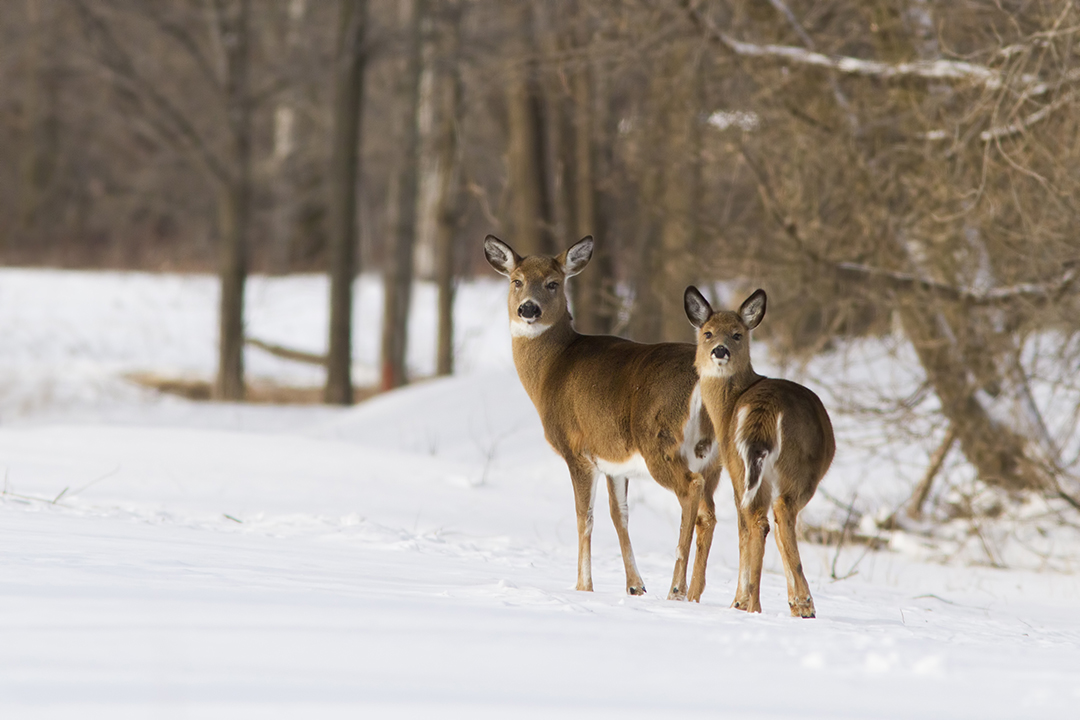
Spread of deadly brain parasite threatens Saskatchewan’s moose and caribou
Last summer, imagine my surprise as I peered into the brain of a harvested white-tailed deer from Saskatchewan and observed a little brown thread of a worm that wasn’t supposed to be there.
By Linnea McLellanBrainworm or meningeal worm (Parelaphostrongylus tenuis), is common in Eastern Canada in white-tailed deer — their natural hosts. But the parasite isn’t supposed to be established west of the Manitoba-Saskatchewan border.
White-tailed deer populations have expanded throughout Western Canada over the past century, along with the potential for spread of meningeal worm to moose and caribou. When these cervid species become infected, the parasites invade the brain and spinal cord and can trigger behavioural changes and neurological problems that often result in death.
“White-tailed deer are kind of like biowarfare with their worms … it is unreal to open up a white-tailed deer and see all these worms ‘chilling out’ on the meninges (protective layers around the brain) and [see] no pathology, no inflammation, nothing,” says Dr. Emily Jenkins, a professor in veterinary microbiology in the Western College of Veterinary Medicine (WCVM) at the University of Saskatchewan (USask).
“And yet, you put one of those worms in a moose or a caribou or a llama, and it can basically kill the animal. So, the change in distribution of white-tailed deer with their little bioweapon [that] they bring along with them is something of great concern for these other more susceptible species.”
I’m a graduate student and member of Jenkins’ research team working with USask ecologist Dr. Phil McLoughlin as part of a project funded by the Natural Sciences and Engineering Research Council of Canada (NSERC) to study environmental changes in Western Canada’s Boreal Plains.
Our goal is to update maps on meningeal worm in white-tailed deer and to determine potential effects on Saskatchewan’s caribou and moose populations. These cervid species are considered “dead-end hosts” for meningeal worms, and unlike white-tailed deer, they’re not capable of spreading the parasite to other species.
At present the brainworm appears to be expanding along with populations of white-tailed deer populations into the southern boreal forest. With future changes in landscape and climate, the northward expansion of white-tailed deer could bring brain worm along for the ride. This is especially concerning for woodland caribou, which are listed as “threatened” under Canada’s Species at Risk Act.
“Caribou and moose are very important for Indigenous peoples, for subsistence and game hunters … so the province is interested in where P. tenuis is and where it’s going,” says Jenkins. “There are lots of outstanding questions about what things drive the distribution of those parasites and what kind of population level impacts they could have.”

Jenkins hopes that mapping the spread of these worms can improve caribou and moose conservation by helping wildlife officials to better understand the health issue and how its spread could contribute to mortality among cervids — especially species at risk.
How do scientists effectively map out the distribution of brainworm? By using poop, of course. Meningeal worm, along with related lung and muscle worms, undergo a complex life cycle that includes entering the digestive tract of their hosts. By examining fecal samples from caribou, moose and deer, we can learn more about this family of worms as well as the hosts and regions of the province in which they inhabit.
My discovery of meningeal worms in the brain of a white-tailed deer harvested in Saskatchewan was the first time in 20 years since provincial scientists made their last known sighting of the parasite in white-tailed deer.
Right now, the impact of P. tenuis on the province’s moose and caribou populations is unknown. However, researchers with the Canadian Wildlife Health Cooperative (CWHC) have recorded infections and mortality in moose across Saskatchewan. These findings suggest that infected moose travel from Manitoba or the United States where the parasite is established, or that local white-tailed deer are harbouring infections much more broadly than previously thought, explains Jenkins.
She hopes that by understanding the new range of white-tailed deer and their worms, individuals and organizations can better manage the interface between white-tailed deer and other native species.
“We’re watching that interzone between white-tailed deer and caribou in the southern boreal forest and going ‘Hmmm’ … there are a lot of things that we don’t want in our caribou … that seem kind of inevitable,” says Jenkins.
Since fences and manmade structures won’t keep white-tailed deer away, she adds “that interface will happen unless we’re really active in our management.”
Understanding the spread of brainworm not only helps moose and caribou but can also be beneficial to livestock producers. Shared pastures often create an interface that allows for disease transmission between livestock and wildlife (such as liver fluke) and between wild and captive cervids (such as chronic wasting disease).
While alpacas, llamas and game-ranched cervids can be affected by meningeal worm, this parasite doesn't seem to cause many problems in cattle and sheep. As well, there’s no danger to humans posed by this parasite since the worms are incapable of infecting a human host.
However, while our health may be safe from this parasite, its potential implications on our country’s essential and iconic wildlife are of great concern. Jenkins and other researchers are working with provincial wildlife biologists and veterinarians and the CWHC to assess this threat and make informed decisions about managing meningeal worm and other diseases that affect wildlife and livestock health.
Linnea McLellan of Regina, Sask., is a USask graduate student who is studying veterinary microbiology at the Western College of Veterinary Medicine (WCVM). Her story is part of a series of articles written by WCVM undergraduate and graduate students.
